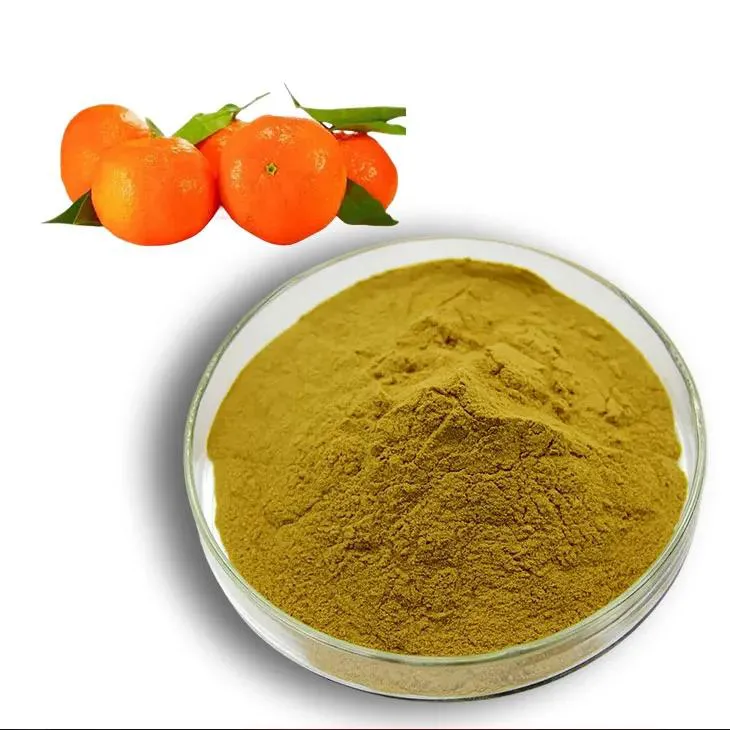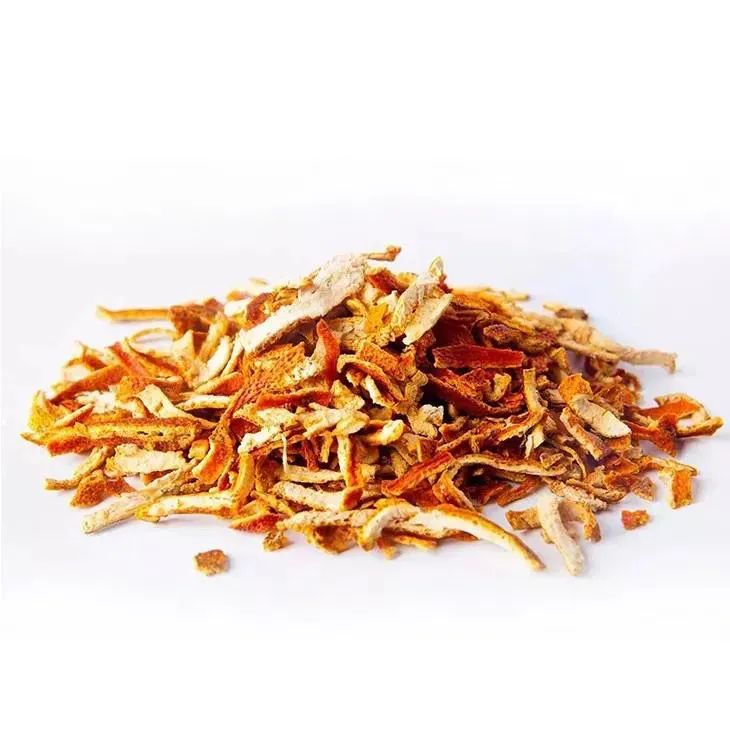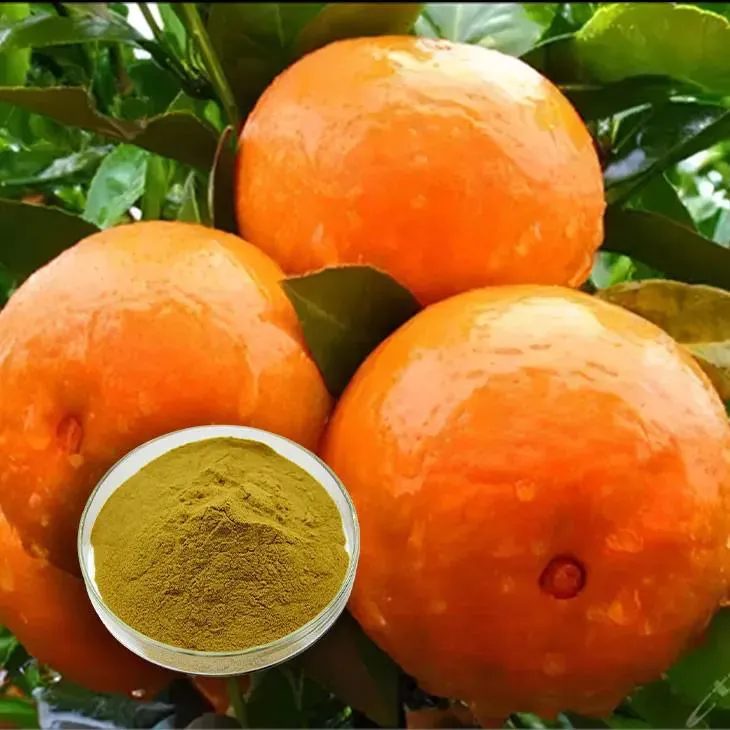- 0086-571-85302990
- sales@greenskybio.com
The best method for extracting citrus bioflavonoids.
2024-11-26

1. Introduction
Citrus fruits are rich sources of bioflavonoids, which have attracted significant attention due to their numerous health - promoting properties. Bioflavonoids are a class of polyphenolic compounds that play important roles in antioxidant, anti - inflammatory, and anti - cancer activities. Extracting these bioflavonoids from citrus fruits efficiently and obtaining high - quality extracts is crucial for their application in the food, pharmaceutical, and cosmetic industries. This article aims to comprehensively discuss the best methods for extracting Citrus bioflavonoids, considering various factors and techniques.

2. Different extraction techniques
2.1. Solvent extraction
Solvent extraction is one of the most commonly used methods for extracting bioflavonoids from citrus. Different solvents can be used, such as ethanol, methanol, and acetone. Ethanol is a popular choice due to its relatively low toxicity and high solubility for bioflavonoids. The process generally involves the following steps:
- Crushing or grinding the citrus peel or fruit to increase the surface area.
- Adding the solvent to the sample in a suitable ratio.
- Stirring or shaking the mixture for a certain period, usually several hours to ensure sufficient extraction.
- Filtering the mixture to separate the extract from the solid residue.
2.2. Supercritical fluid extraction (SFE)
Supercritical fluid extraction (SFE) has emerged as a promising technique for citrus bioflavonoid extraction. Supercritical carbon dioxide (scCO2) is often used as the supercritical fluid. The advantages of SFE are as follows:
- It is a relatively clean and environmentally friendly method, as carbon dioxide is non - toxic, non - flammable, and easily removed from the extract.
- The extraction can be carried out at relatively low temperatures, which is beneficial for preserving the bioactivity of bioflavonoids.
- The selectivity of SFE can be adjusted by changing the pressure and temperature conditions, allowing for more targeted extraction of specific bioflavonoids.
2.3. Microwave - assisted extraction (MAE)
Microwave - assisted extraction (MAE) utilizes microwave energy to accelerate the extraction process. In this method:
- The citrus sample is placed in a microwave - transparent container along with the extraction solvent.
- The microwave radiation heats the solvent rapidly, increasing the mass transfer rate and enhancing the extraction efficiency.
- MAE can significantly reduce the extraction time compared to traditional solvent extraction methods. For example, extraction times can be reduced from several hours to a few minutes.
2.4. Ultrasound - assisted extraction (UAE)
Ultrasound - assisted extraction (UAE) is another effective extraction method. Ultrasound waves create cavitation bubbles in the solvent, which collapse and generate high - pressure and high - temperature micro - environments. These micro - environments enhance the extraction process in the following ways:
- They disrupt the cell walls of the citrus tissue, facilitating the release of bioflavonoids into the solvent.
- UAE can improve mass transfer, leading to increased extraction efficiency.
- It is a relatively simple and cost - effective method, and can be easily combined with other extraction techniques.

3. Factors affecting extraction efficiency
3.1. Particle size of the sample
The particle size of the citrus sample has a significant impact on the extraction efficiency. Smaller particle sizes generally result in larger surface areas, which are more accessible to the extraction solvent. For example, when the citrus peel is finely ground, the solvent can more easily penetrate into the tissue and extract the bioflavonoids. However, if the particle size is too small, it may lead to problems such as clogging during the extraction process.
3.2. Solvent - to - sample ratio
The ratio of solvent to sample is an important factor. A higher solvent - to - sample ratio may increase the extraction efficiency as there is more solvent available to dissolve the bioflavonoids. However, an excessive amount of solvent may not only be wasteful but also increase the cost of extraction and subsequent purification steps. Therefore, an optimal solvent - to - sample ratio needs to be determined based on the nature of the sample and the extraction method.
3.3. Extraction time and temperature
- Extraction time: For most extraction methods, there is an optimal extraction time. Longer extraction times do not always result in higher yields of bioflavonoids. In solvent extraction, for instance, after a certain period, the extraction may reach equilibrium, and further extraction may not significantly increase the amount of bioflavonoids in the extract. In methods like MAE and UAE, excessive extraction time may lead to degradation of bioflavonoids.
- Extraction temperature: Temperature also affects the extraction efficiency. In general, higher temperatures can increase the solubility of bioflavonoids in the solvent, but too high a temperature may cause degradation of these compounds. For example, in solvent extraction, heating the mixture can enhance the extraction, but if the temperature is above a certain limit, the bioflavonoids may lose their bioactivity.

4. Significance of obtaining high - quality bioflavonoids from citrus
Obtaining high - quality Citrus bioflavonoids is of great significance in several aspects.
- Health benefits: High - quality bioflavonoids can provide strong antioxidant, anti - inflammatory, and anti - cancer effects. They can scavenge free radicals in the body, reduce oxidative stress, and help prevent various chronic diseases such as cardiovascular diseases, diabetes, and cancer.
- Food industry applications: In the food industry, Citrus bioflavonoids can be used as natural preservatives, colorants, and flavor enhancers. High - quality extracts can improve the nutritional value and shelf - life of food products.
- Pharmaceutical and cosmetic applications: In the pharmaceutical field, bioflavonoids can be developed into drugs or dietary supplements for treating various diseases. In cosmetics, they can be used for anti - aging, skin whitening, and moisturizing purposes due to their antioxidant and anti - inflammatory properties. High - quality bioflavonoids ensure the effectiveness and safety of these products.
5. Optimization of extraction methods for maximum yield and purity
To achieve maximum yield and purity of citrus bioflavonoids, several strategies can be employed.
- Combination of extraction techniques: Combining different extraction techniques can often achieve better results. For example, UAE can be used first to disrupt the cell walls, followed by solvent extraction to further extract the bioflavonoids. This combination can increase the extraction efficiency and purity.
- Purification steps: After extraction, purification steps such as column chromatography, membrane filtration, and crystallization can be carried out to remove impurities and obtain high - purity bioflavonoids. These purification steps can also help in separating different types of bioflavonoids based on their chemical properties.
- Response surface methodology (RSM): RSM is a statistical method that can be used to optimize the extraction parameters. By studying the relationships between multiple factors (such as extraction time, temperature, solvent - to - sample ratio) and the response variable (yield or purity of bioflavonoids), an optimal set of parameters can be determined.
6. Conclusion
In conclusion, there are several extraction methods for citrus bioflavonoids, each with its own advantages and limitations. Solvent extraction is a traditional and widely used method, while SFE, MAE, and UAE offer more advanced and efficient alternatives. Factors such as particle size, solvent - to - sample ratio, extraction time, and temperature significantly affect the extraction efficiency. Obtaining high - quality bioflavonoids from citrus is crucial for their various applications in health, food, pharmaceutical, and cosmetic industries. By optimizing the extraction methods through techniques such as combination of methods, purification steps, and statistical optimization, maximum yield and purity of citrus bioflavonoids can be achieved. Future research may focus on further improving these extraction methods, exploring new solvents or extraction techniques, and better understanding the bioactivity and applications of different citrus bioflavonoids.
FAQ:
What are the common extraction techniques for citrus bioflavonoids?
Some common extraction techniques for citrus bioflavonoids include solvent extraction, such as using ethanol or methanol. Supercritical fluid extraction, especially with carbon dioxide, is also popular as it can provide high - purity extracts. Microwave - assisted extraction and ultrasound - assisted extraction are emerging techniques that can enhance extraction efficiency by reducing extraction time and solvent consumption.
What factors can affect the extraction efficiency of citrus bioflavonoids?
Several factors can influence the extraction efficiency. The type of solvent used is crucial, as different solvents have different affinities for bioflavonoids. The particle size of the citrus material affects the surface area available for extraction; smaller particles generally lead to better extraction. Temperature also plays a role; higher temperatures can increase the solubility of bioflavonoids but may also cause degradation. Extraction time is another factor; longer extraction times may increase the yield up to a certain point, after which no further significant increase occurs.
Why is it important to obtain high - quality citrus bioflavonoids?
Citrus bioflavonoids have various health benefits, such as antioxidant, anti - inflammatory, and anti - cancer properties. High - quality bioflavonoids are more likely to exhibit these beneficial effects effectively. They can also be used in the food and pharmaceutical industries, where purity and quality are essential for product safety and efficacy.
How can the extraction methods be optimized for maximum yield?
To optimize for maximum yield, one can start by carefully selecting the extraction technique based on the characteristics of the citrus material and the desired bioflavonoids. For solvent extraction, the optimal solvent concentration, temperature, and extraction time need to be determined through experimental design. In the case of emerging techniques like microwave - assisted or ultrasound - assisted extraction, the appropriate power levels and exposure times should be explored. Additionally, pre - treatment of the citrus material, such as drying or grinding to the right particle size, can also contribute to maximizing the yield.
How can the purity of citrus bioflavonoids be improved during extraction?
To improve purity during extraction, purification steps can be incorporated. After the initial extraction, techniques like column chromatography can be used to separate bioflavonoids from other impurities. Selective solvents can also be employed during extraction to target only the bioflavonoids. Careful control of extraction conditions, such as temperature and pH, can prevent the extraction of unwanted compounds, thereby enhancing the purity of the bioflavonoids.
Related literature
- Extraction and Characterization of Bioflavonoids from Citrus Fruits"
- "Optimization of Citrus Bioflavonoid Extraction: A Review"
- "New Approaches in Extracting High - Quality Citrus Bioflavonoids"
- ▶ Hesperidin
- ▶ Citrus Bioflavonoids
- ▶ Plant Extract
- ▶ lycopene
- ▶ Diosmin
- ▶ Grape seed extract
- ▶ Sea buckthorn Juice Powder
- ▶ Fruit Juice Powder
- ▶ Hops Extract
- ▶ Artichoke Extract
- ▶ Mushroom extract
- ▶ Astaxanthin
- ▶ Green Tea Extract
- ▶ Curcumin
- ▶ Horse Chestnut Extract
- ▶ Other Product
- ▶ Boswellia Serrata Extract
- ▶ Resveratrol
- ▶ Marigold Extract
- ▶ Grape Leaf Extract
- ▶ New Product
- ▶ Aminolevulinic acid
- ▶ Cranberry Extract
- ▶ Red Yeast Rice
- ▶ Red Wine Extract
-
Sophora Japonica Flower Extract
2024-11-26
-
Bilberry Extract
2024-11-26
-
Ivy Extract
2024-11-26
-
Peppermint Extract Powder
2024-11-26
-
Black Rice Extract
2024-11-26
-
Chasteberry Extract
2024-11-26
-
Troxerutin
2024-11-26
-
Oat Straw Extract Powder
2024-11-26
-
Tinospora cordifolia extract
2024-11-26
-
Black Pepper Extract
2024-11-26





















